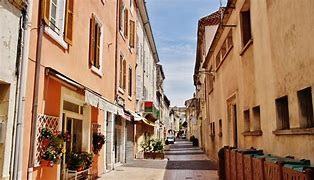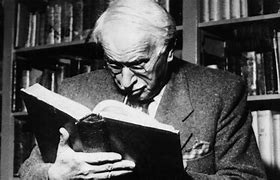The Montélimar Time Slip - Hoax, Myth or Paradox?
Len and Cynthia Gisby and Geoff and Pauline Simpson departed from Dover on October 3, 1979, on a two-week driving holiday to northern Spain. One evening they were looking for a place to stay on the road north of Montélimar, a small town in in the Auvergne-Rhône-Alpes region of southeast France. They came across a motel, but unfortunately there were no available rooms. The staff at the motel suggested they take a particular local road to find a hotel. The group soon discovered the narrow streets of the picturesque town of Montélimar were lined with typical old, run-down buildings and signs advertising an old-style circus. They stumbled upon a hotel and a police station. Communication was limited due to language difficulties. The hotel's interior had old wooden furniture and there was a lack of modern conveniences which made the place feel like it belonged to another time.
 The bedrooms were also very old-fashioned. The beds had large, heavy bolsters, and the windows were covered with wooden shutters instead of glass. The doors had wooden catches instead of locks. The plumbing in the shared bathroom was Victorian. After unpacking, the tourists went to the dining room where they were served a simple dinner and locally brewed beer. The next day they returned to the dining room for breakfast, and noticed a woman across from them holding a small dog dressed in a silk evening gown. Two unfamiliar gendarmes in unusual uniforms entered the hotel. Intrigued, the tourists took a photo of the inside and exterior of the hotel, and also of Mrs Simpson by a window. When ready to leave, they were only charged 19 francs by the hotel. Mr Gisby tried to explain that he was paying for all four of them, and that they had all eaten there. The hotel insisted the price was correct, and the two gendarmes confirmed that the amount was indeed right.
The bedrooms were also very old-fashioned. The beds had large, heavy bolsters, and the windows were covered with wooden shutters instead of glass. The doors had wooden catches instead of locks. The plumbing in the shared bathroom was Victorian. After unpacking, the tourists went to the dining room where they were served a simple dinner and locally brewed beer. The next day they returned to the dining room for breakfast, and noticed a woman across from them holding a small dog dressed in a silk evening gown. Two unfamiliar gendarmes in unusual uniforms entered the hotel. Intrigued, the tourists took a photo of the inside and exterior of the hotel, and also of Mrs Simpson by a window. When ready to leave, they were only charged 19 francs by the hotel. Mr Gisby tried to explain that he was paying for all four of them, and that they had all eaten there. The hotel insisted the price was correct, and the two gendarmes confirmed that the amount was indeed right.
Following their time in the Spanish Basque region, the tourists wished to return to the hotel in Montélimar on their drive back to England. After finding the correct turn they drove along the same street, passing advertising for the circus. However, the hotel itself was nowhere to be seen. Confused, they asked for directions, but no one they asked had ever heard of the hotel. The tourists searched along the road several times, but it seemed to have vanished.
The shaken and confused tourists finally gave up and lodged at another hotel in Lyon, which cost them much more (247 francs to be precise). Although puzzled by what had happened, they assumed there was a rational explanation. However, when their photographs were developed, the snapshots of the hotel were all missing. The rest of their photographs had developed normally. The Gisbys and the Simpsons were perplexed and told people their story, and it was not long before it reached a local newspaper. The story was also published in The Unexplained Magazine in 1981.
them much more (247 francs to be precise). Although puzzled by what had happened, they assumed there was a rational explanation. However, when their photographs were developed, the snapshots of the hotel were all missing. The rest of their photographs had developed normally. The Gisbys and the Simpsons were perplexed and told people their story, and it was not long before it reached a local newspaper. The story was also published in The Unexplained Magazine in 1981.
Serious doubts arise regarding the story's veracity (for example, why the appearance of a modern car driven by people dressed in 1970s fashion who paid with modern money did not appear out of the ordinary to anyone at the hotel). Nevertheless, the narrative shares similarities with another well-known time slip incident which occurred at Versailles in 1901 (see my 'Time Slip Phenomena'). Both incidents involved intelligent interactions with people and both involved tourists unfamiliar with their environment.
Whether true or not, the Montélimar time slip story makes us think of Carl Jung's ideas about time and eternity. His theory argued that time is relative to each of us, and was closely related to his overall view of the universe and the human psyche. He believed that to comprehend our experiences fully, we must move beyond causality and linear time. This implies that multidimensional and synchronistic experiences are something that are both interiorised and can be shared by all of us . With the help of Jung's theory of time we can leave behind our time-bound world and enter a more meaningful, connected one. As Jung wrote:
eternity. His theory argued that time is relative to each of us, and was closely related to his overall view of the universe and the human psyche. He believed that to comprehend our experiences fully, we must move beyond causality and linear time. This implies that multidimensional and synchronistic experiences are something that are both interiorised and can be shared by all of us . With the help of Jung's theory of time we can leave behind our time-bound world and enter a more meaningful, connected one. As Jung wrote:
"It is clear that timeless and spaceless perceptions are possible only because the perceiving psyche is similarly constituted. Timelessness and spacelessness must therefore be somehow inherent in its nature, and this in itself permits us to doubt the exclusive temporality of the soul, …we know that a door exists to a quite different order of things from the one we encounter in our empirical world of consciousness. This is about all that science can contribute to this question. Beyond that there is still the subjective psychological experience which can be in the highest degree convincing for the individual even though it cannot be shared by the wider public.” (Letter to Pastor W. Arz, 17 February 1933)
 This underlines that even a hoax arises from the psyche since all imaginative exercises are grounded in the collective unconscious. Yet, if at least 'some' of the Montélimar account is true, it is highly suggestive that the unconscious exists in a state of relative spacelessness and timelessness. Jung claimed that, "For the psyche this means a relative eternality and a relative non-separation from other psyches, or a oneness with them." (Letter to Mrs. Otto Milbrand, 6 June 1958) This is because Jung believed that the psyche "is held captive neither by change in time nor by limitation of place.” (Letter to Hannah Oeri, 23 December 1950)
This underlines that even a hoax arises from the psyche since all imaginative exercises are grounded in the collective unconscious. Yet, if at least 'some' of the Montélimar account is true, it is highly suggestive that the unconscious exists in a state of relative spacelessness and timelessness. Jung claimed that, "For the psyche this means a relative eternality and a relative non-separation from other psyches, or a oneness with them." (Letter to Mrs. Otto Milbrand, 6 June 1958) This is because Jung believed that the psyche "is held captive neither by change in time nor by limitation of place.” (Letter to Hannah Oeri, 23 December 1950)
Read more on time slip phenomena
Article (c) 2024 M.R. Osborne






